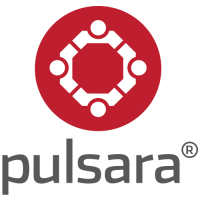Sponsored by Pulsara
By Ben Thompson for EMS BrandFocus
Faced with the challenges of growing costs, aging populations, chronic illnesses and people with limited access to or understanding of the healthcare system, many EMS agencies are considering community paramedicine and mobile integrated healthcare (aka MIH-CP) programs.
MIH-CP involves using specially trained paramedics to fill gaps in the system and offers the opportunity for providers to take on a more comprehensive approach to patient care, which can improve outcomes and help reduce costs.
For example, community paramedics can conduct in-home wellness checks to help patients manage chronic diseases like diabetes. Better management and understanding of these conditions can help prevent emergencies, as well as reduce the number of costly non-emergency calls.
Here are 10 things you should know about building a successful MIH-CP program for your community.
1. Learn your community’s needs
Don’t make the mistake of trying to simply duplicate a program just because it worked somewhere else. Every community is different, so you will need to do your homework. The information you collect will serve as the foundation for your program’s success.
Obtaining solid data can be a challenge. The great news for EMS is that many hospitals around the country are now required to publish a tri-annual community health needs assessment, doing most of the hard work for us. This information provides a perfect launch point to begin collaborative discussions with hospital administrators, especially if you are looking for the hospital to pay for your out-of-hospital assessment and treatment services.
2. Identify potential funding sources
No matter how effective your program proves to be, if there is no way to pay for it, it will not survive. There are many different funding options available, from hospital partnerships to grants. Decide early which one your program is aiming for to ensure you are taking the proper steps to obtain it. Check out this article on MIH-CP program funding sources to learn more.
Also consider whether your program might fit into the new federal Emergency Triage, Treat and Transport (ET3) payment model, that will make Medicare reimbursement available for certain non-transport ambulance services that deliver treatment in place (on-scene or via telemedicine).
3. Offer support to existing community programs
Developing an MIH-CP program will lead your agency to work with a multitude of different agencies and nonprofits in your community. Take the time to show your support for the work they do by sharing their efforts on social media or by participating in their events.
Many of your own program’s future successes will rely on the availability of the services these agencies provide. By helping with their missions, you will help accomplish your own.
4. Get the public on your side
MIH-CP programs are very popular with the public, so the worst thing you can do is keep yours a secret. Gain supporters early via social media, and then take them along on the journey as your program develops.
Keeping the public engaged takes discipline. Set weekly reminders on your calendar so you don’t forget to publish a post or tweet. Even if it’s nothing more than a quick “Happy Friday!” note, keeping your program in the public eye will keep you in their hearts – and public support can prove to be a valuable currency if your program encounters any political red tape.
5. Identify the right providers
In addition to compassion, knowledge and experience, both racial and gender diversity should be considered as you build your team. Aim to create a team of providers representative of the community they will be serving. They are more than healthcare providers. They are ambassadors leading your agency on a new endeavor.
6. No one can do it alone
Due to a lack of funding, many agencies are placing the responsibility of their entire programs on a single well-intentioned provider. No matter how driven these individuals may be, the problems MIH-CP programs face administratively and out in the streets are too much for one person. It takes a team.
7. Record the data, but don’t forget the stories
When it comes to dollars, data is king. But sometimes the stories behind the numbers are much more compelling. Many of the administrators with the power to make decisions have been long removed from the front lines of healthcare. Sharing the details of recent successes and failures – and the patients whose lives have been improved – can provide fresh inspiration for those typically focused on hard data.
8. Partner with local colleges
Social work and nursing programs around the country are actively seeking to provide hands-on learning experiences for their students. By providing ride-along and internship opportunities, your program can obtain affordable assistance from tomorrow’s leaders.
Don’t limit your offer to only these types of programs, as you might miss out. You could have a student working on his MBA write next year’s budget proposal. By being creative and open, the possibilities are endless.
9. Reward your patients’ successes
When a patient is successful, it needs to be acknowledged. A printed certificate of congratulations, a challenge coin or even a handwritten note can serve to commemorate the moment. It’s also a nice way to bring the working relationship to a close so your providers can move on to patients with more pressing needs.
10. Success has many faces
Dealing with difficult populations is, well, difficult. No matter what we do, some patients will refuse to change, even if it’s for their own good.
But there is always something positive gained from these encounters. You may gain a new contact at a local nonprofit or find a new place to get affordable medications. You may have reduced that patient’s ER trips by one or two (and that’s no small expense). Or you may have inspired one of their family members to step up and be more assertive with their care.
No matter what happens, just by being there and trying our best we are showing the citizens we serve that we care.














